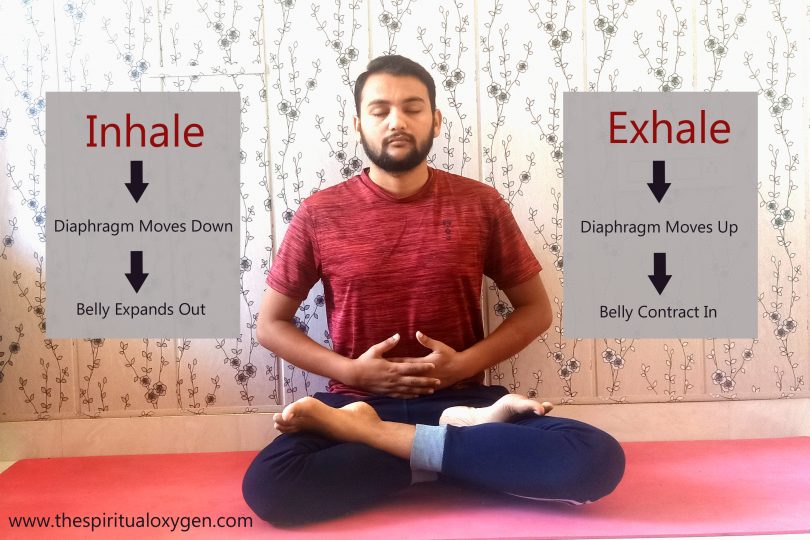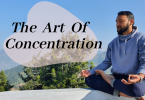The diaphragm is a thin muscle that separates the lungs from the abdomen cavity. It contracts and flattens when you inhale. This creates a vacuum effect that pulls air into the lungs. When you exhale, the diaphragm relaxes and the air is pushed out of lungs.
In our normal breathing diaphragm hardly moves, which indicates poor breathing habit. But this poor habit of breathing can be improved by deep breathing. Diaphragmatic breathing is a kind of deep breath which not only improves breathing habit but also stimulates parasympathetic nervous system.
During the emotional stress our sympathetic nervous system actives and also you may experience anxiety, tiredness, low energy and weak immune responses. With the practice of abdominal breathing you can switch to parasympathetic nervous system which is responsible for rest and digestion responses in the human body.
During the practice of abdominal breathing, diaphragm extends downward into the abdomen on inhalation and upward on exhalation and promotes the most efficient type of breathing.
How to do abdominal/deep breathing
- Lie in Shavasana or sit comfortably and relax the whole body.
- Allow the breath to become spontaneous and even. Breath should be natural, no force is required.
- Take the attention to the diaphragm (abdomen).
- Begin to breathe in slowly and feel the abdomen moving up
- When you need to exhale begin to exhale slowly and feel the abdomen moving down.
- At the same time, chest, should neck and face should be relaxed.
- Feel that the movement of the diaphragm is responsible for the abdominal movement.
- Continue to breathe in and out slowly and feel the abdomen moving up and down.
- Repeat the practice for 50 breaths or up to 10 minutes.
The benefits of deep breathing
- Increases supply of oxygen and Improves cellular regeneration
- Detoxifies and releases toxins
- Release muscular tension
- Relax the mind body and brings clarity
- Relieves emotional problems
- Releases physical pain
- Strengthen the immunity system
- Improves quality of blood
- Increases digestion and assimilation of food
- Improves the nervous system
- Strengthen the lungs
- Strengthens the heart boost
- Energy level and improve stamina
- Elevates mood
If you are interested in learning Pranayama. You can enroll in my “Pranayama for beginner (level 1)” or “Pranayama for advance practitioner (level 2)” program. For more details contact me at mohitkumarjuglan@gmail.com or Instagram @the_spiritual_oxygen







